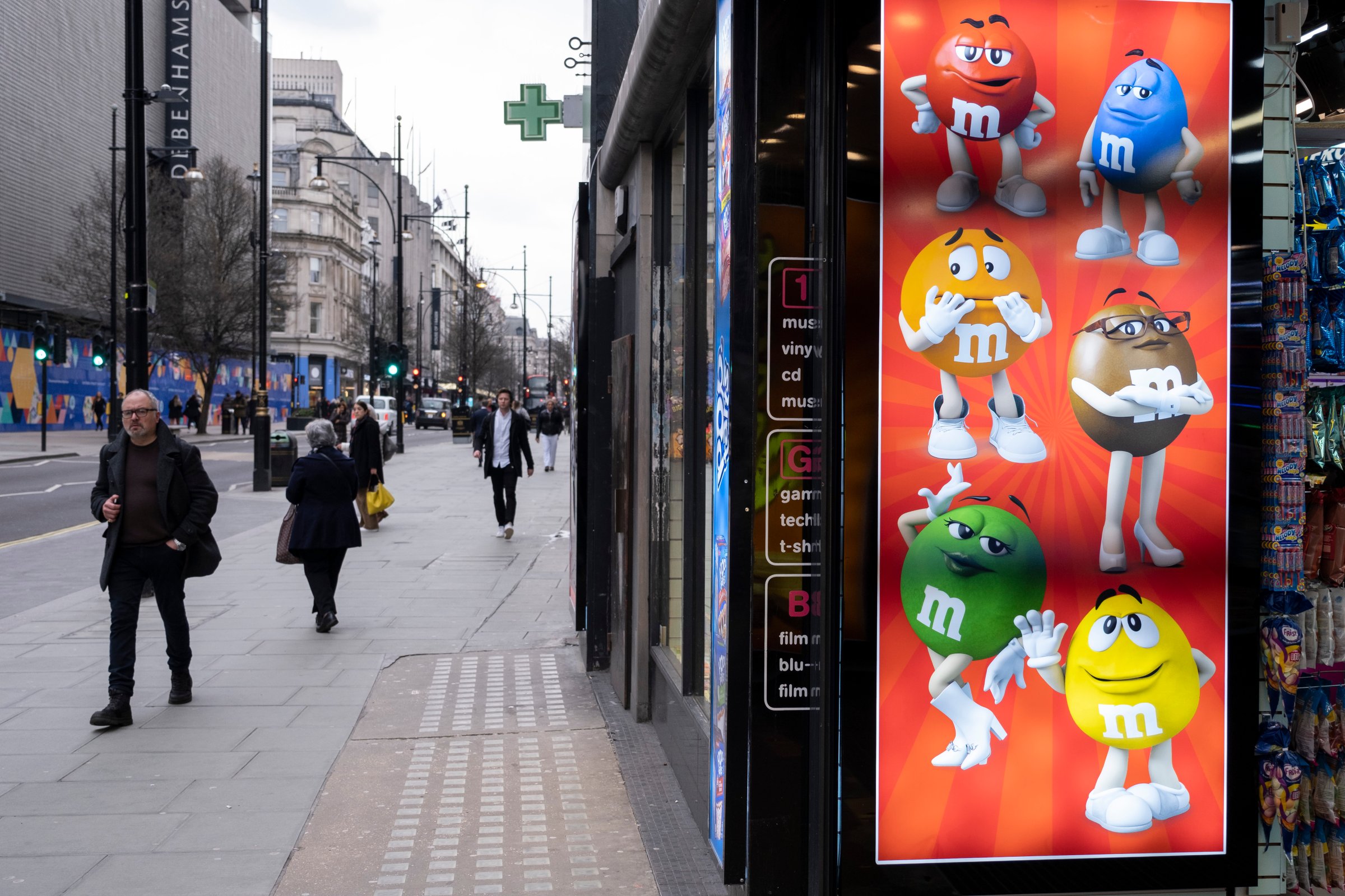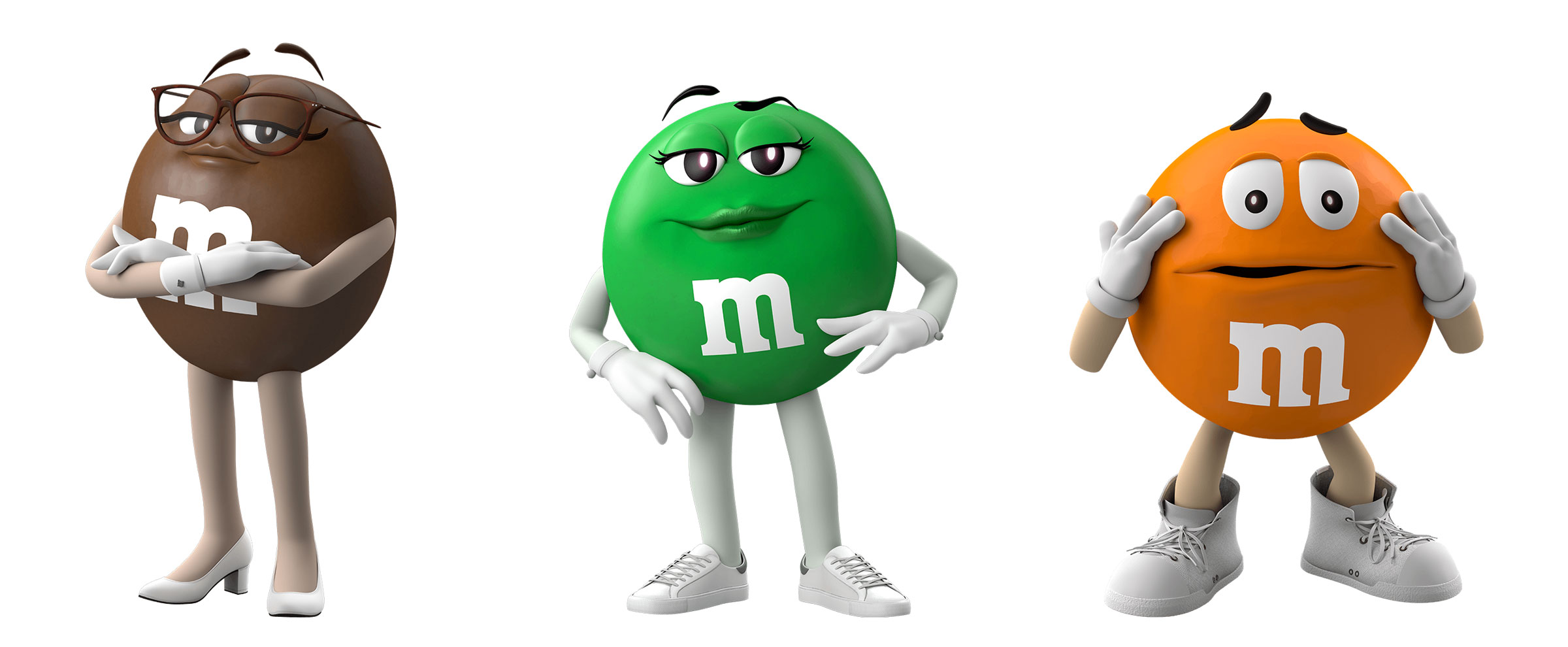
M&M’s says it is abandoning its colorful candy mascots because they are too “polarizing” for Americans to handle these days.
The ubiquitous chocolate characters—which have been the face of M&M’s for years—didn’t say anything controversial. But they became the focus of a partisan backlash after the brand, owned by Mars Inc., made a number of stylistic tweaks to its cast of “spokescandies” last year to be more inclusive. Right-wing commentators began criticizing the campaign, with Fox News host Tucker Carlson devoting time during multiple segments to decry the popular candy as “Woke M&M’s.”
Now the brand is moving in a new direction, the company said in an announcement posted on social media. The “spokescandies” are on “an indefinite pause” and actress Maya Rudolph will become the new face of M&M’s—someone the brand said “America can agree on.”
But the decision to put a temporary pause on the iconic mascots drew its own share of criticism from fans and branding experts alike. Some also questioned whether it had all been an elaborate stunt to capitalize on a low-stakes internet controversy.
“What M&M’s is showing is that it’s going to back down from what it stands for if it receives a lot of negative criticism,” says Deb Gabor, the CEO of Sol Marketing, a branding agency. “It’s becoming increasingly important to people that they know what brands stand for when they throw down their support.”
The M&M’s controversy could serve as a lesson for other brands.
“There’s an old saying—if it ain’t broke, don’t fix it,” says Steven Fink, a crisis consultant and author of Crisis Communications: The Definitive Guide to Managing the Message. “I suggest they make it a permanent pause. They should go back to doing whatever they were doing before because nobody was paying any attention to it until they started this nonsense—unless the new characters had increased their sales.”
Here’s how we got here.
‘Even A Candy’s Shoes Can Be Polarizing’
As it turns out, not everyone can agree on what kind of shoes an M&M cartoon character should wear.

In January 2022, the brand replaced the green M&M’s knee-high boots with flats and swapped the brown M&M’s stilettos for lower heels. It also announced that the orange M&M would embrace his anxiety; he would even start tying his shoelaces—moves many celebrated as more progressive.
But others saw the revamp as an affront.
“M&M’s will not be satisfied until every last cartoon character is deeply unappealing and totally androgynous until the moment when you wouldn’t want to have a drink with any one of them,” Carlson remarked on Fox. “That’s the goal. When you’re totally turned off, we’ve achieved equity. They’ve won.”
M&M’s addressed the cosmetic tweaks in a statement on Monday, telling fans it hadn’t expected people to even notice the initial changes. “We definitely didn’t think it would break the internet,” the brand said. “But now we get it—even a candy’s shoes can be polarizing.”
‘Uplifting and Empowering Women’
The chocolate candies generated more buzz in right-wing circles this month after M&M’s introduced a new purple character to its roster and added it to a limited edition all-female character branded pack intended to “celebrate women everywhere who are flipping the status quote.” Mars, Inc. said that a portion of profits would go to organizations that are “uplifting and empowering women,” including She Is The Music and We Are Moving the Needle, two nonprofit organizations that support women in the music industry.
“Woke M&M’s have returned,” Carlson declared on his show in mid-January. “The green M&M’s got her boots back but apparently is now a lesbian, maybe, and there is also a plus-sized, obese purple M&M. So we’re going to cover that, of course. Because that’s what we do.”

Mars, Inc. has not specified the sexual orientation of the green M&M, while the purple M&M appears to be the shape of its peanut flavored candies, which are typically larger, like the original yellow character.
More than 20,000 people have signed an online petition to “keep the green M&M sexy.”
Other right-wing figures weighed in on the drama, too. One even claimed that the brand’s attempt at inclusivity emboldens China.
“If this is what you need for validation, an M&M that is the color that you think is associated with feminism, then I’m worried about you,” Fox News anchor Martha MacCallum said earlier this month. “I think that makes China say, ‘Oh, good, keep focusing on that. Keep focusing on giving people their own color M&M’s while we take over all of the mineral deposits in the entire world.’”
“When I eat a bag of M&M’s, do I wonder which color and shape best represents my identity? No, because it’s f—ing chocolate,” Fox News host Greg Gutfeld said in January 2022. “If you really truly want to make an M&M feel like they belong, you probably shouldn’t be eating them. I mean, what kind of message does it send to children when you devour these non-binary bonbons?”
M&M’s Response
In response, the brand said on Monday that the polarized reaction to the rebrand was “the last thing M&M’s wanted,” emphasizing its focus on bringing people together. “Therefore, we have decided to take an indefinite pause from the spokescandies.”
The mascots had been used in the brand’s advertising campaigns since 1954. Older M&M’s commercials featured Red and Yellow, representing regular and peanut M&M’s. New characters and colors joined the crew in the 1990s.
Rudolph, the new M&M spokesperson, will represent the brand in a Super Bowl ad on Feb. 12, the actress announced on Monday’s TODAY Show.
“There are other ways to get attention that are more long term and aligned with the brand,” Gabor says. “This doesn’t feel like a stunt. It feels like they stepped in something they didn’t like, and they backtracked.”
“It’s a really hard time to be a brand and navigate these things,” Gabor added. “We have a very, very polarized society … And I always tell our clients that actions speak louder than marketing.”
Carlson touched on the subject again during his show Monday night, after the U-turn was announced. “Well the geniuses at the Mars Corporation imagine you might want to be lectured about sexual politics while you eat their chocolate candies. It turns out a lot of people didn’t want that, they just wanted the snack,” he said.
Mars, Inc. did not immediately respond to a request for a comment.
More Must-Reads from TIME
- Why Biden Dropped Out
- Ukraine’s Plan to Survive Trump
- The Rise of a New Kind of Parenting Guru
- The Chaos and Commotion of the RNC in Photos
- Why We All Have a Stake in Twisters’ Success
- 8 Eating Habits That Actually Improve Your Sleep
- Welcome to the Noah Lyles Olympics
- Get Our Paris Olympics Newsletter in Your Inbox
Write to Nik Popli at nik.popli@time.com